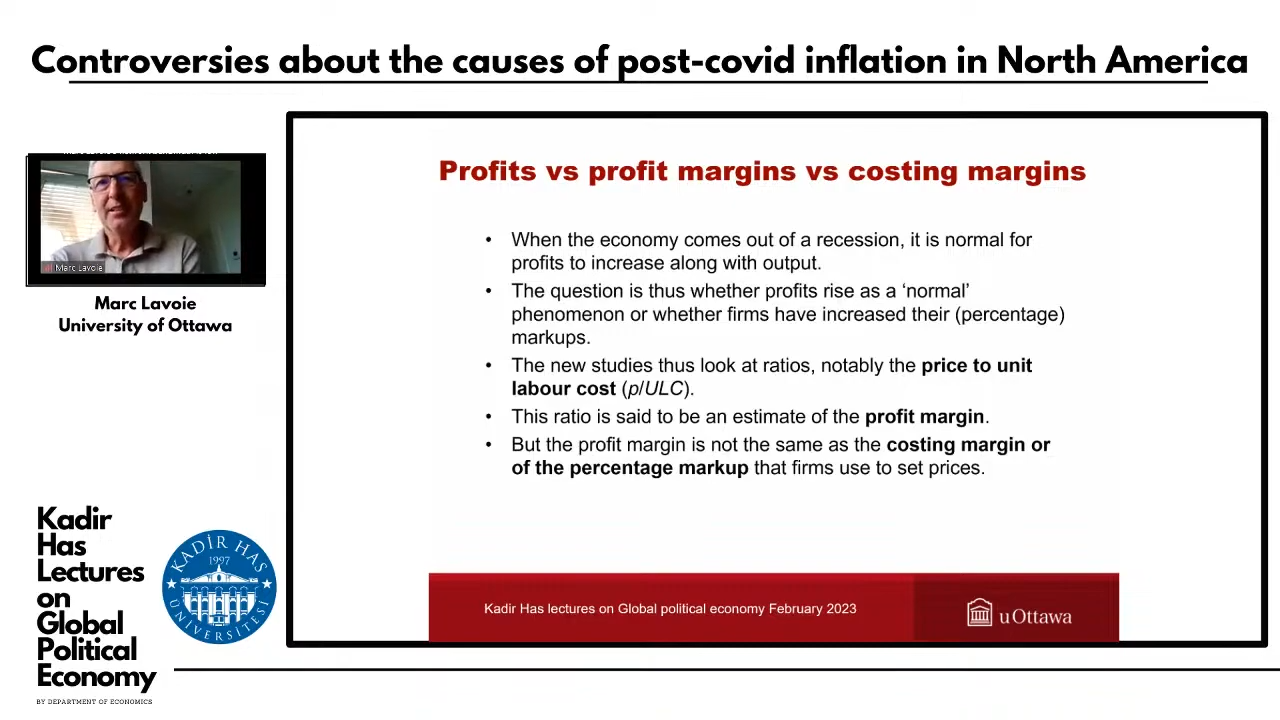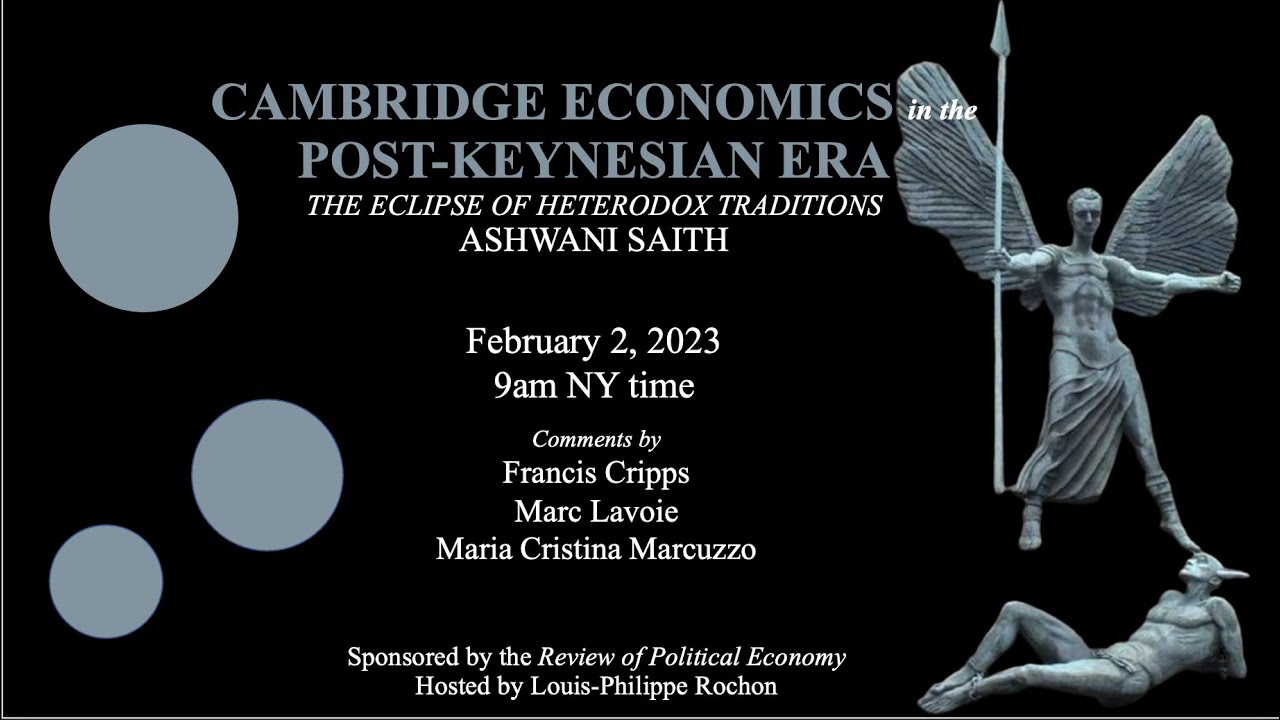Anthony Thirlwall has passed away. His work is highly important in Post-Keynesian economics. Here is what one of his ex-students Mohammed Nureldin Hussain said about the Thirlwall Law in The Implications Of Thirlwall’s Law For Africa’s Development Challenges in the book Growth And Economic Development: Essays In Honour Of A.P. Thirlwall:
The Professor started to work out the mathematics of his manuscript. The good old blackboard notwithstanding, the identities and equations of the model were animated, left-handedly, in a manner that competes easily with Bill Gates’ PowerPoint facilities. The model contained three basic equations representing the growth of imports, the growth of exports, and a dynamic expression of the overall balance of payments equilibrium. He substituted the first two equations into the third and the model was solved to yield an elaborate expression of the growth rate of real gross domestic product (GDP). When the terms of trade were assumed to be constant the elaborate equation collapsed into an expression containing three symbols: y = x/π. ‘The rate of growth (y) of any developed country in the long run is equal to the growth rate of the volume of its exports (x) divided by its income elasticity of demand for imports (π)’, he explained.
Our eyes were fixed on the blackboard, attempting to digest the meaning and internalize the implications of this tri-legged animal. That job was not easy. For the animal distilled volumes of legendary work in economic development, encapsulating all of them in a small-sized anti-underdevelopment pill. The teaching of Engel’s law, which implies that the demand for primary goods increases less than proportionally to increases in global income; the Harrod foreign trade multiplier which put forward the idea that the pace of industrial growth could be explained by the principle of the foreign trade multiplier;3 the Marshall– Lerner condition which implies that a currency devaluation would not be effective unless the devaluation-induced deterioration in the terms of trade is more than offset by the devaluation-induced reduction in the volume of imports and increase in volume of exports; the Hicks super-multiplier4 which implies that the growth rate of a country is fundamentally governed by the growth rate of its exports; the Prebisch–Singer hypothesis which asserts that a country’s international trade that depends on primary goods may inhibit rather than promote economic growth; the Verdoorn–Kaldorian notion that faster growth of output causes a faster growth of productivity, implying the existence of substantial economies of scale;5 Kaldor’s paradox which observed that countries that experienced the greatest decline in their price competitiveness in the post-war period experienced paradoxically an increase in their market share and not a decrease; the literature on export-led growth which asserts that export growth creates a virtuous circle through the link between output growth and productivity growth – all of these doctrines were somehow put into play and epitomized within this small-sized capsule. Not only that but the capsule was sealed by the novel and powerful ingredient of the balance-of-payments constraint: ‘in the long run, no country can grow faster than that rate consistent with balance of payments equilibrium on current account unless it can finance ever-growing deficits which, in general, it cannot’.
The time for class discussion came and all the debate seemed to linger around one basic query: if growth could be explained by a rule which contained two variables only, what was the relevance of the many other socio-economic variables that could also influence the growth process? What about the role of policies and economic management? What about the role of capital, labour and technical progress? The answers of the Professor were convincing to some students, but confusing to many others. In an attempt to relieve our baffled faces he concluded the discussion by saying, in a pleasant fusion of smile and speech: ‘Simple laws make good economics’. And as he was leaving the classroom, his smile turned gradually into a laugh that engulfed his remark: ‘if this rule came to be known as Thirlwall’s Law, I will retire’. Less than one year after the publication of the manuscript in 1979 the rule was crowned as ‘Thirlwall’s Law’. But, retire? He did not. I suppose genuine philosophers like this man will never retire even if they wanted to.
…
NOTES
…
- See Kaldor (1978).
- See McCombie (1985).
- See Kaldor (1975).
…
REFERENCES
…
Kaldor, N. (1975), ‘Economic Growth and the Verdoorn Law – A Comment on Mr. Rowthorn’s Article’, Economic Journal, 85(340), December, 891–6.
Kaldor, N. (1978), ‘The Effects of Devaluation on Trade in Manufactures’, in N. Kaldor, Further Essays on Applied Economics, London: Duckworth.
…
McCombie, J.S.L. (1985), ‘Economic Growth, the Harrod Foreign Trade Multiplier and the Hicks Super-multiplier’, Applied Economics, 17(1), February, 55–72.
…
Appreciated/referrred by Anthony Thilwall himself in his article Balance Of Payments Constrained Growth Models: History And Overview from the year 2012.

